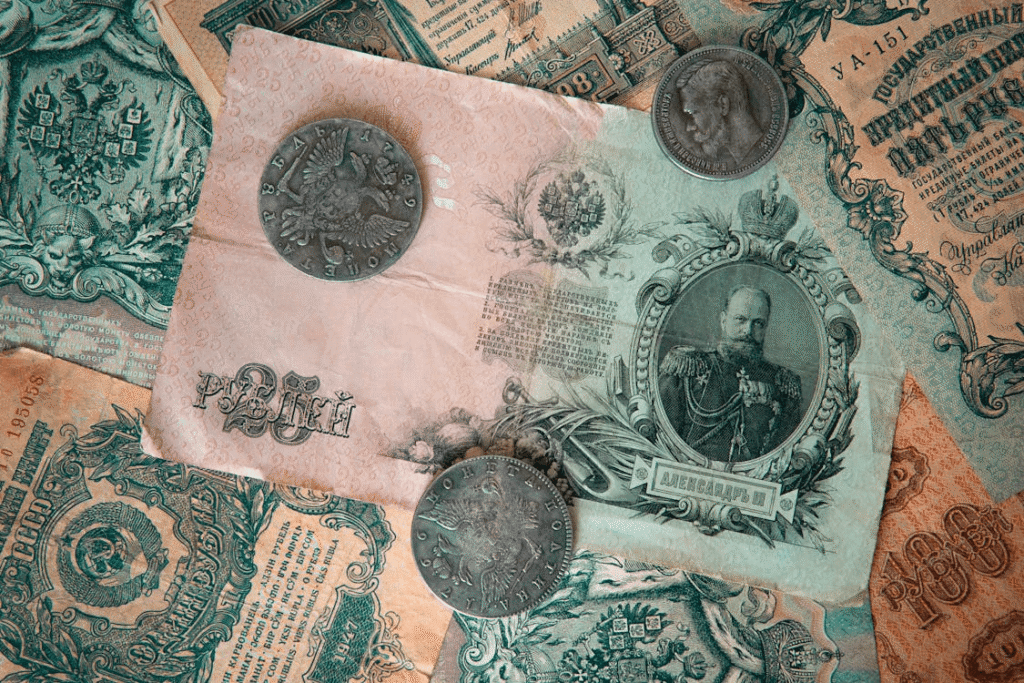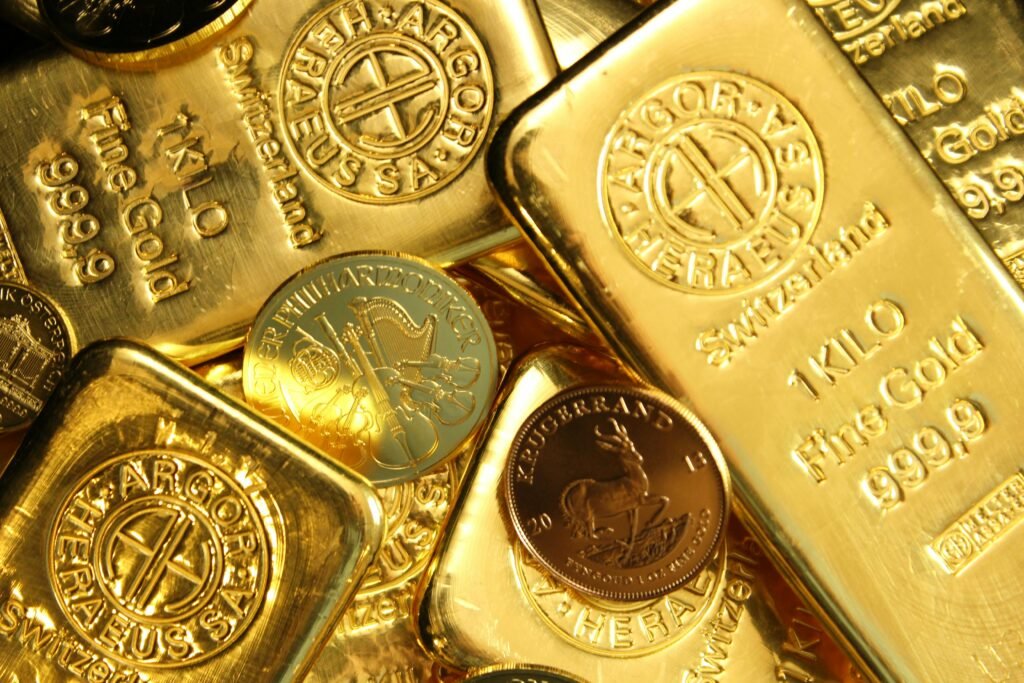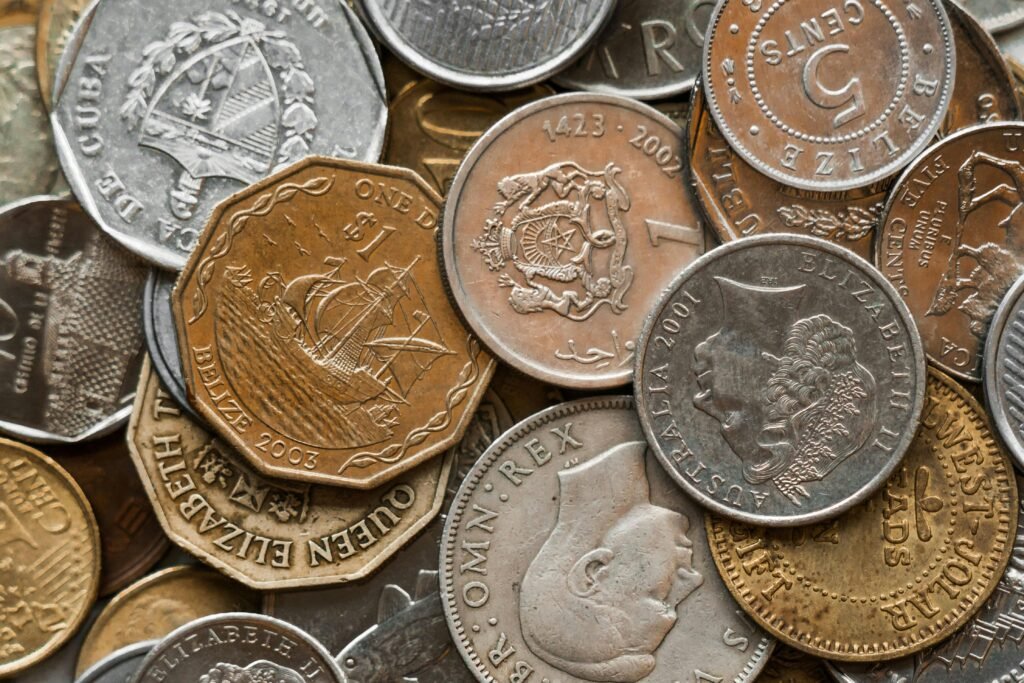Common Fakes & Quick Authentication Steps
Counterfeit coins are not a fringe problem—they’re everywhere: online marketplaces, travel markets, even mixed into dealer inventories. The good news? With a disciplined checklist-first approach, you can filter out 90%+ of fakes in minutes and decide when to escalate to professional authentication. This guide brings together the most counterfeited coins, the quickest field tests, advanced verification methods, marketplace risk levels, and exact next steps if you’re unlucky enough to buy a fake. Keep it open whenever you shop—your wallet will thank you.
Why counterfeiting exists in numismatics
Counterfeiting thrives where reward > risk. High-value coins (key-date Morgans, sovereigns, $20 Saints) fetch thousands; even common bullion pieces are profitable to fake at scale. Enforcement is uneven, cross-border prosecution is hard, and the barrier to entry has fallen as technology improves.
High-value coins = high incentive
Any coin with liquid demand and four-figure pricing is a prime target. The counterfeiter’s math is simple: a die-struck imitation that costs a few dollars to manufacture can sell for hundreds if it passes a buyer’s quick glance. That’s why keys and high-grade moderns attract forgers: the payoff per piece is huge.
Low prosecution rates
Cross-jurisdictional investigations are tough, and many counterfeits are sold piecemeal through private channels or ephemeral online accounts. Even when platforms remove listings, sellers often reappear. The expected penalty, from the counterfeiter’s perspective, remains low relative to profits.
Sophisticated Chinese fakes flooding market
Mass-produced die-struck counterfeits (not just crude casts) now mimic weight, diameter, reeding, and even micro-details. Some factories produce multiple die pairs to simulate variability in genuine coins. That means your first-line tests must be quantitative (weight/size/metal) before you judge “looks.”
Technology making fakes better
High-resolution scanning, CNC milling, laser engraving, and improved alloys make modern fakes convincing. Even slabs get cloned. The antidote is layered verification: physical measurements + magnetic/conductivity response + die/typography checks + provenance + (for high value) professional testing.
Most commonly counterfeited coins
Counterfeiters follow the money and the trend cycles. Learn these hotspots so your guard is up before emotion takes over.
US: Morgan Dollars (key dates), Trade Dollars, $20 Gold pieces
Morgans: 1893-S, 1889-CC, and other keys often appear with added mintmarks or fully fabricated pieces. Trade dollars are faked endlessly (and genuine counterfeits exist historically!), making authentication essential. Saint-Gaudens and Liberty $20s are faked in both gold-plated base metals and underweight gold-alloy forms.
British: Sovereigns, Trade Dollars
The British sovereign is a global bullion standard—small, liquid, and easy to pass. Expect both die-struck and gold-plated brass fakes, plus altered dates. The British Trade Dollar is commonly forged and requires careful dragon scales, denticles, and lettering inspection.
Ancient coins (Roman, Greek)
The ancient market faces a flood of fantasy types, cast copies, and deceptive “tooled” pieces. Provenance and expert attribution are critical; many fakes are “good enough” to fool non-specialists. When in doubt with ancients, buy the seller as much as the coin.
High-grade modern coins (MS-69, MS-70)
Slabbed moderns with lofty pops invite fake holder rings and misrepresented reholdered coins. Raw modern “perfect” coins are routinely over-graded or cosmetically improved; insist on top-tier certification when perfection is priced in.
Any coin worth >$100 is at risk
Once a coin crosses the three-figure line, the counterfeit economics make sense. Don’t let “It’s only $150” reduce your diligence—small wins in volume are a counterfeiter’s bread and butter.
Types of counterfeits
Understanding how fakes are made reveals where to look.
Cast fakes (mold from genuine coin)
Tell-tales: soft, pebbly surfaces, seam lines on the edge, filled-in or mushy lettering, identical repeating pits. Weight often runs light due to trapped bubbles. A microscope reveals cast texture in fields.
Die-struck fakes (manufactured dies)
Better fabrications with crisp edges. Tells: wrong font shapes, inconsistent mintmark style/placement, incorrect die polish lines, and hub details that don’t match known die marriages. Metal composition may be off; weight and ring can still betray them.
Altered coins (adding mintmark, changing date)
Common with 1909-S VDB, 1916-D Mercury dime, CC Morgans. Under magnification, added mintmarks show tooling, different surface flow, or mismatch with genuine mintmark punches.
Counterfeit holders/slabs (fake PCGS/NGC)
Fraudsters clone labels and serials. Some plastic shells look convincing, but font, spacing, prongs, holograms, and label stock can give them away. Always verify the cert number and match images on the grading service website.
After passing checks, confirm condition with grading basics.
Quick visual checks
These five tests catch most fakes in under two minutes. Use them every time, even for “trusted” sellers.
Weight (precision scale, 0.1 g accuracy)
Compare to official specs (e.g., Morgan: 26.73 g). Accept only tight tolerances (±0.2 g for circulated silver; less for gold). Off-weight = instant red flag requiring further testing.
Dimensions (digital caliper, thickness too)
Diameter and thickness must match. Even a 0.2–0.3 mm deviation can be fatal for classic issues. Measure multiple points to catch out-of-round casts.
Magnet test (silver/gold are non-magnetic)
A rare-earth magnet should not stick. However, beware of copper-nickel cores (also non-magnetic). For silver, a magnet slide test (magnet drifting slowly down a real silver bar/coin) can indicate proper conductivity (eddy currents).
Edge reeding (count reeds, check consistency)
Reed spacing and depth are remarkably consistent on genuine coins. Uneven, bunched, or shallow reeding screams counterfeit or tampering. For lettered edges, compare font and spacing.
Color and tone (fakes often “off”)
Base-metal yellows for “gold,” chrome-like shine for “silver,” or unnaturally uniform color/toning are warning signs. Genuine old silver often shows gradual toning in recesses first; harsh, even gray can indicate cleaning—or casting residue.
The ping test
The classic ring test checks acoustic signature.
How it works (specific frequency for genuine coins)
When lightly tapped and suspended (or balanced on a fingertip), silver coins produce a clear, sustained ring. Base metals give a thud. Apps analyze the frequency signature (coin-dependent) to confirm.
Apps: Bullion Test and similar
Audio apps can screen bullion-sized coins (ASEs, Maples) fairly well. They’re less reliable for small coins, damaged pieces, or those in holders.
Limitations: works best on bullion, not numismatics
The ping test struggles with ancients, cleaned, or problem coins, and can be thrown off by cracks, holes, or clips. Treat it as one data point, never a final verdict.
Detailed examination checklist
Once a coin passes basic metrics, scrutinize die details and surfaces.
Design sharpness (mushy details = suspect)
Soft relief at edges, melted look in hair or feathers, and indistinct denticles are typical in casts. For die-struck fakes, look for almost right details that fail under magnification.
Font and lettering (wrong shapes)
Counterfeit dies often mis-render serifs, spacing, or stroke thickness. Compare questionable letters (e.g., the shape of an “S” in the mintmark or the “1” in a date) to a known-genuine reference.
Mintmark position and style
Mintmarks had specific punches and positions by year/mint. Wrong style, size, or distance from devices is a giveaway. Added mintmarks often sit too high/low or at incorrect angles.
Die characteristics (genuine markers)
Genuine dies show polish lines, die cracks, or markers documented in references for that date/mint. A coin that lacks known markers might still be genuine—but a coin with impossible markers is not.
Luster and surface flow
Struck coins display cartwheel luster and flow lines. Cast coins don’t. Unnatural, greasy sheen or grainy fields point to casting; uniform “shine” plus parallel hairlines indicate cleaning.
Red flags when buying
Stop and reassess if any of these appear:
- Price is well below market (“friend price,” “estate sale urgency”).
- Seller has no track record, new account, or private feedback.
- Location is a known counterfeit hub and shipping is opaque.
- Photos are vague, overexposed, or stock images.
- Seller resists close-ups of mintmark, date, edge, or refuses weight/size info.
- No returns, “as-is,” or pressure to pay off-platform (wire/crypto/F&F).
One red flag warrants caution; two means pass.
Commonly faked specific coins
1804 Silver Dollar (virtually all are fake)
Genuine 1804 dollars are legendary and museum-level. Any raw 1804 offered casually is fake. Don’t waste time—use the offer as a test of the seller’s credibility (or lack thereof).
1909-S VDB Lincoln Cent (added mintmark)
Look for the S punch shape/placement, V.D.B. typography, and die markers. Added mintmarks show tooling around the “S” and texture mismatch.
1916-D Mercury Dime (added mintmark)
The genuine D has a specific shape/position. Many fakes modify 1916-P dimes; inspect under 10×–20× magnification for disturbed metal.
Carson City (CC) Morgan Dollars (added mintmark)
“CC” spacing, angle, and punch style matter. Added “CC” tells: micro-chipping around mintmark, surface flow disruptions.
High Relief $20 Saint-Gaudens
Expect die-struck fakes with convincing relief. Verify weight, diameter, edge lettering, and gold composition (specific gravity/XRF if value warrants).
Trade Dollars (Chinese manufacture)
Heavily faked. Focus on denticles, star shapes, lettering, and chopmarks (genuine chopmarks have depth and metal displacement).
Altered coins: the subtle fake
Added or removed mintmarks
Under magnification, look for tool chatter, different surface texture, or filled metal around the mintmark. Compare exact position to plate coins.
Changed dates (tooling digits)
Watch for inconsistent font, shallow numeral bases, or raised burrs from engraving tools.
Filled holes or damage
Old jewelry coins are sometimes plugged and re-toned. A circular color/texture change inside the field is suspect.
How to spot alterations (magnification, flow lines)
Natural flow lines radiate from striking; tooling disrupts them. A loupe (10×) or microscope (20×–40×) reveals tampering.
Counterfeit PCGS/NGC holders
Yes, even slabs are faked
Fraudsters replicate labels, fonts, holograms, and serials. Some print QR codes that resolve to spoofed pages.
How to verify: cert number on PCGS/NGC website
Always check the cert and compare images. If the photos don’t match your coin’s toning/marks, stop.
Physical differences in fake holders
Look for plastic clarity, label stock, hologram type, prong shape, and ultrasonic seal consistency. Fakes often miss small production details.
Serial number analysis
Search if the same cert is for sale in multiple places or tied to a different date/mint/grade. Report duplicates.
Tokens and medals have unique authentication cues.
Advanced testing methods
Specific gravity testing (water displacement)
Simple, cheap density check. Gold/silver have known densities; base-metal cores show significant deviation. Calibrate your scale and suspend the coin to avoid air bubbles.
XRF analysis (elemental composition)
Non-destructive spectroscopy reads surface composition. Great for detecting plated pieces or wrong alloys. Surface-only reads can miss deep cores; still, it’s a powerful screen.
Sigma Metalytics tester (conductivity-based)
Measures electrical resistivity through the coin (even inside certain holders) and flags off-spec metals. Works well for bullion; less decisive on thin or tiny coins.
When to use professional authentication
If a coin is expensive (your threshold) or fails any test ambiguously, submit to PCGS/NGC or consult a recognized authentication expert before committing funds—or to support a return/chargeback.
Buying safely: best practices
Buy from reputable dealers (major firms, ANA members)
Established firms stake their reputation and will take back mistakes. Ask about guarantees and return windows.
Insist on PCGS/NGC slabs for expensive coins
Top-tier certification standardizes grade and authenticity, boosting liquidity and reducing risk.
Verify cert numbers immediately
Before you pay, run the cert and match photos. If the seller can’t provide clear images, walk away.
Use secure payment methods
Credit cards and PayPal Goods & Services offer dispute/chargeback rights. Avoid wires, crypto, or “Friends & Family” for first-time sellers.
Know your seller
Read reviews, search their name + “fakes/complaints,” and check how long they’ve been active. A real business leaves a trail.
What to do if you bought a fake
Contact seller immediately (return/refund)
Most platforms require you to start the process fast. Keep communication on-platform and document everything with photos and test results.
Credit card chargeback (if seller won’t cooperate)
Dispute the charge as counterfeit goods. Provide evidence: correspondence, photos, expert notes. Deadlines are strict—act quickly.
Report to eBay/platform
Platforms remove repeat offenders faster with multiple reports. Use the listing link and upload your evidence.
Report to Secret Service (U.S.) or national authority
Counterfeiting is a crime. Reporting helps build cases—even if your refund is already processed.
Cut your losses (don’t resell it)
Knowingly reselling a fake is illegal and unethical. Mark and retain for training—or surrender as part of a claim.
Online marketplaces: risk levels
eBay: moderate–high risk
Great selection, mixed sellers. Use only top-rated vendors with thousands of feedback, clear return policies, and detailed photos. Avoid “too cheap” auctions with blurry images.
Heritage Auctions, Stack’s Bowers: low risk
Reputable houses vet consignments and stand behind attributions. Prices may be higher, but risk-adjusted value is excellent.
Etsy, Amazon: high risk
General marketplaces with uneven oversight. Listings often use stock photos and vague descriptions. Proceed with extreme caution or avoid.
Private sales: very high risk
Unless you know the counterparty and can inspect in person (with tools), don’t send irreversible payments. If you do buy, insist on escrow and a return provision.
Coin shows: moderate risk
You can handle coins and use your loupe. Still, reputation varies; buy from booths with established branding, posted policies, and references.
Resources and education
PCGS/NGC photo resources
Use Photograde and certification image archives to learn what genuine coins look like across grades. Study key diagnostics for popular fakes.
Counterfeit detection books
Series-specific guides (e.g., for Morgan/Peace dollars, sovereigns) and ANA materials build your mental library of die markers and fonts.
Online forums
Communities like CoinTalk or specialized Facebook groups crowdsource authentication. Post clear, straight-on photos of obverse, reverse, edge, and close-ups.
ANA authentication services
For tricky cases, ANA and major TPGs provide paid evaluations. Keep their written opinions for disputes or insurance.
Prevention checklist summary
10-point checklist before any purchase
- Know the specs (weight, diameter, thickness, composition).
- Weigh (0.1 g resolution) and measure (digital caliper).
- Magnet test; slide test for silver if possible.
- Edge: reeding count/consistency or lettering accuracy.
- Mintmark/date: confirm style and exact placement.
- Die details: fonts, denticles, device sharpness, known markers.
- Luster: cartwheel vs cast grain/cleaning hairlines.
- Seller: reputation, returns, detailed photos, location.
- Price: within normal range? If it’s a steal, assume fake until proven otherwise.
- Payment: use methods with buyer protection.
Red flag spotter guide
- “No returns,” “estate find,” “don’t know much about coins.”
- Stock or AI-looking images; refusal to provide edge pics.
- New account, little feedback, private profile.
- Off-platform payment requests.
Verification steps for expensive coins
- Require slabbing or submit yourself pre-purchase via escrow.
- Run XRF/SG or Sigma for composition when feasible.
- Match cert images from PCGS/NGC to the coin in hand.
- Keep a written examination log (date, tests, results) for recourse.
Diligence is your best protection
Counterfeits will keep evolving; your defenses must be layered and repeatable. Start with quantitative tests (weight/size/magnet), then move to die diagnostics, edge checks, and luster. For high-value pieces, insist on PCGS/NGC certification or bring in professional tools and expertise. Buy the seller as much as the coin, prefer protected payment methods, and remember: walking away from a sketchy “deal” is the most profitable trade you’ll ever make.
Authentication first, then valuation.



